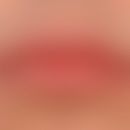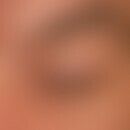Synonym(s)
HistoryThis section has been translated automatically.
Brunner et al. 1962
DefinitionThis section has been translated automatically.
You might also be interested in
Occurrence/EpidemiologyThis section has been translated automatically.
EtiopathogenesisThis section has been translated automatically.
A triggering agent is not yet known with certainty. The frequently described "asymmetry" of the skin symptoms is unusual. An infectious or parainfectious genesis in connection with previous viral infections (parovirus B19, parainfluenza 2 viruses, parainfluenza 3 viruses, Epstein-Barr viruses, adenoviruses/Cohen-Sors R et al. 2020, coronaviruses/Glick L et al. 2020; Valencia-Herrera A et al. 2023) is discussed.
ManifestationThis section has been translated automatically.
LocalizationThis section has been translated automatically.
ClinicThis section has been translated automatically.
Mostly occurring after or during an infection with mild catharrhal or gastrointestinal symptoms (60% of patients), unilateral localized exanthema with maculo-papular, scaly inflammatory efflorescences, partly disseminated, partly following the Blaschko lines; occasionally also lichenoid skin changes; moderate pruritus (2/3 of cases); concomitant lymphadenopathy possible.
LaboratoryThis section has been translated automatically.
Nonspecific; gfls. positive viral serology.
HistologyThis section has been translated automatically.
Differential diagnosisThis section has been translated automatically.
Tinea corporis; drug exanthema; acrodermatitis papulosa eruptiva infantilis (Gianotti-Crosti syndrome); pityriasis rosea, miliaria rubra
TherapyThis section has been translated automatically.
Progression/forecastThis section has been translated automatically.
LiteratureThis section has been translated automatically.
- Bodemer C, Prost Y (1992) Unilateral laterothoracic exanthem in children: a new disease? J Am Acad Dermatol 27: 693-696
- Brunner MJ et al (1962) A new papular erythema of childhood. Arch Dermatol 85: 539-540.
- Cohen-Sors R et al (2020) Asymmetric periflexural exanthema of childhood and influenza virus infection. Dermatol Online J 26:13030/qt0qw93417.
- Glick L et al (2020) "Unilateral laterothoracic exanthem in association with coronavirus disease 2019." JAAD case reports 6.9: 900-901.
- Mc Cuaig C et al (1996) Unilateral laterothoracic exanthem. J Am Acad Dermatol 34: 979-984.
- Peker S et al (2000) Unilateral laterothoracic exanthema. Case report and review of the literature. Dermatol 51: 505-508
- Scott LA et al (2003) Viral exanthems. Dermatol Online J 9: 4
- Strom K et al (1999) Unilateral latero-thoracic exanthema in childhood. Clinical characteristics and diagnostic criteria in 5 patients. Dermatologist 50: 39-44
- Taieb A et al (1993) Asymmetric periflexural exanthema of childhood. J Am Acad Dermatol 29: 391-393.
Valencia-Herrera A et al (2023) Asymmetrical periflexural exanthema associated with SARS-CoV-2 infection in a pediatric patient. Acta Derm Venereol 103:adv00839.
Incoming links (7)
Apec; Asymmetrical periflexural exanthem; Asymmetrical periflexural exanthema of childhood; COVID-19 and skin; Exanthema, asymmetric, periflexural; Paraviral exanthema; Ule;Outgoing links (6)
Adverse drug reactions of the skin; Coronaviridae; Gianotti-crosti syndrome; Miliaria rubra; Pityriasis rosea; Tinea corporis;Disclaimer
Please ask your physician for a reliable diagnosis. This website is only meant as a reference.






